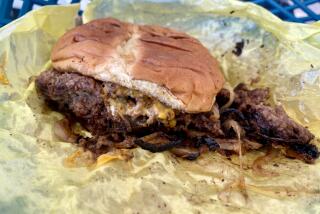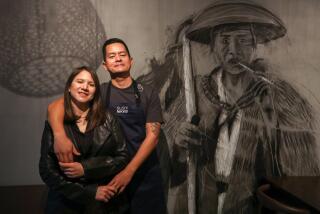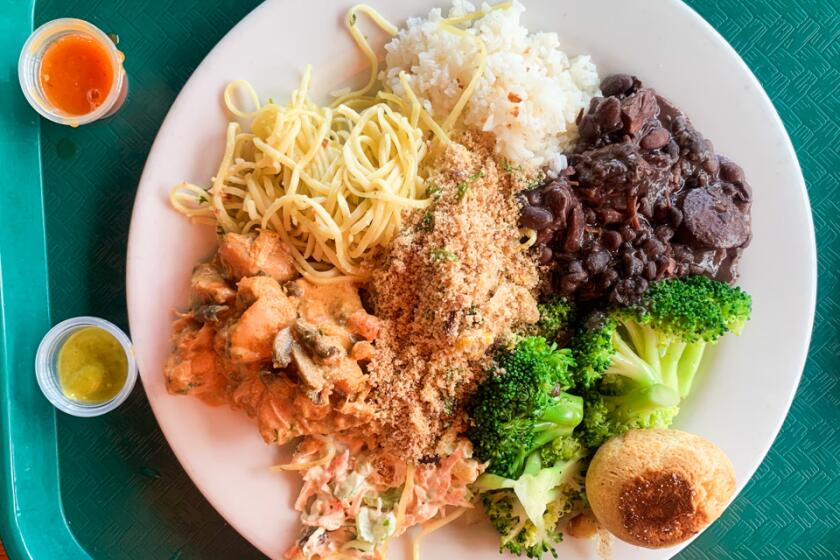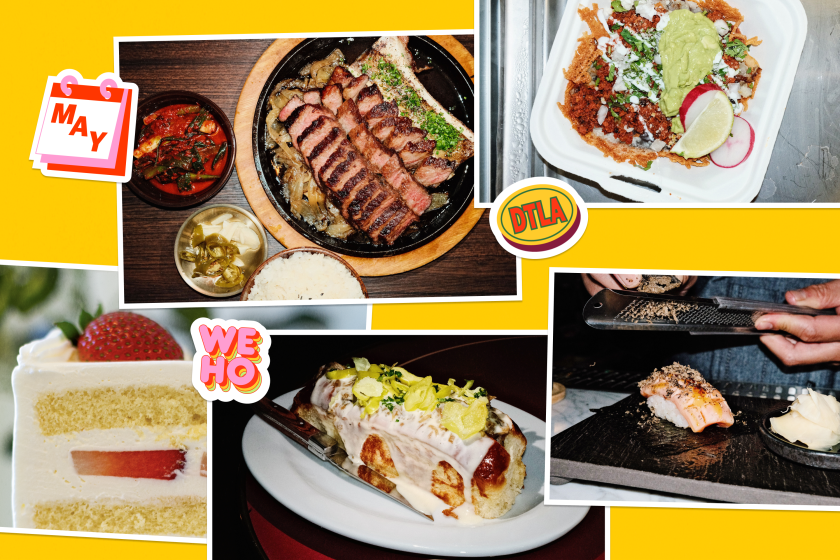MOM FOOD : Remembering the women who shaped our tastes. The recipes are the least of it. : We Remember Mama : Yes: Masa
When I was growing up on the Veracruz coast, the slap-slap of women’s hands forming corn tortillas was as constant and soothing to me as the crash of the nearby surf. I remember wandering into our breezy, tiled kitchen each morning and devouring the puffy gold discs as our maids whisked them from the sizzling hot comal.
Just as constant was the large ball of masa that sat on the counter top covered with a dampened piece of rough-hewn cloth. This simple dough of ground corn and water was our staff of life. It was the base not only for our tortillas but for countless other dishes that filled our plates and delighted our palates.
For Mexicans, working with masa is a spiritual tradition. As legend tells us, the gods molded humans from corn. Some of the very food we place on our tables today was enjoyed by Montezuma and by prehistoric Indians. In essence, every time we work that heavy, pliable dough through our hands, we place ourselves in touch with our ancient roots.
While Americans are beginning to experiment with the wide variety of Mexican chiles, salsas and herbs that are now available, they have not yet adopted masa into their cooking regime. A big reason for this is that hand work, in general, is not a part of the American culinary tradition. Americans are a bit daunted by the idea. It seems too complicated and time-consuming, especially when frozen entree and gourmet specialty shops provide such an appealing alternative.
What a shame. Nothing can quite compare to the taste of a mashed ripe avocado or a dab of onion-flecked beans cradled in a warm, soft tortilla. Nor can any store-bought treat make one’s mouth water like the fabulous array of masa finger foods we call antojos.
Literally meaning “before the eyes,” these savory treats were traditionally served before meals to spark the appetite. Today, however, antojos are eaten at any time as convenient snacks for those on the go or alongside a tossed salad for a delicious meal.
Working with masa as sculptors work with clay, Mexicans have managed to create a seemingly endless variety of antojos. Though similar versions may be found throughout the country, each region adds its own special twist, be it in the spices they use, the thickness of their dough or the shape of their finished product.
With the help of pre-ground masa harina and a tortilla press, available in specialty shops and some supermarkets, working with masa is relatively fast and simple. And the payoff is tremendous. After a little bit of practice, expert and novice cooks will find they have discovered one of the most versatile and delicious of cooking mediums.
There are a few tricks to cooking successfully with masa. Like a good pie crust dough, masa must have just the right consistency--not too sticky, not too dry. The basic recipe I have provided below is my mother’s. Start with the smaller amount of water and keep adding until the masa is pliable and pulls cleanly from your hands.
A proper cooking surface, heated sufficiently, is also crucial. In Mexico, antojos and tortillas are cooked on a comal --a thick iron griddle heated over coals. The ideal alternative in the American kitchen is a stove-top griddle. If this is not available, a cast-iron pan will do quite well. Either surface should be lightly greased with vegetable oil and preheated at medium-high for 10 to 15 minutes.
Lastly, use imagination. Once you feel comfortable, don’t be afraid to experiment with a variety of fillings and textures. Wrap a warm tortilla around leftover ratatouille. Enclose caramelized onions in masa, grill the pocket and douse it with a roasted pepper sauce.
Masa is wonderfully adaptable, and its unique flavor and texture will add a new dimension to cooking.
MASA AND TORTILLAS
FROM MASA HARINA
3 cups masa harina
1/2 teaspoon salt
1 1/2 to 2 cups lukewarm water
Combine masa harina, salt and lukewarm water in bowl and mix with fork. Gather into ball and knead dough until smooth and no longer sticky. Cover with towel and let stand 1 hour.
To make tortillas, line base of tortilla press with sheet plastic wrap or plastic sandwich bag. Pinch off balls of dough from masa. (Size will vary, depending on desired tortilla diameter; balls usually are slightly bigger than walnut.) Center masa on lined tortilla press base. Cover masa with sheet plastic wrap. Lower top of press and push down on handle. Open.
Carefully peel away plastic from top. Place left hand (if right-handed) under tortilla. Flip tortilla onto right hand, so plastic is on top. Carefully peel away plastic. Flip tortilla onto preheated, very hot griddle or cast-iron pan. When tortilla begins to dry on edges, flip over and cook until top begins to puff. Tap lightly with finger tips to allow even puffing and let cook briefly, 1 1/2 to 2 minutes. Remove tortillas from griddle and wrap in napkin or clean towel and serve. Makes 1 1/2 pounds masa or about 24 tortillas.
More to Read
Eat your way across L.A.
Get our weekly Tasting Notes newsletter for reviews, news and more.
You may occasionally receive promotional content from the Los Angeles Times.






